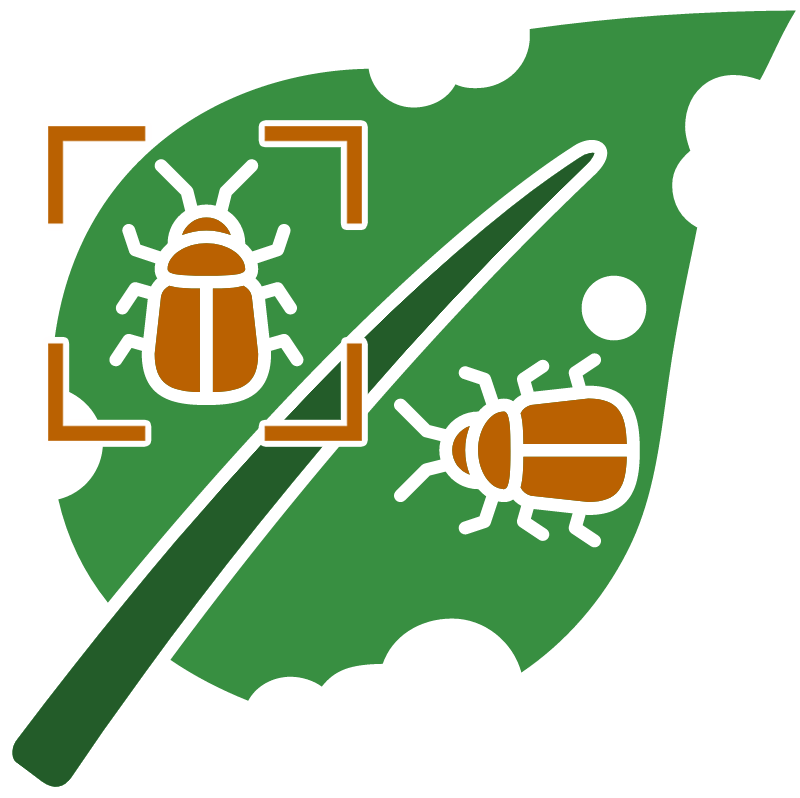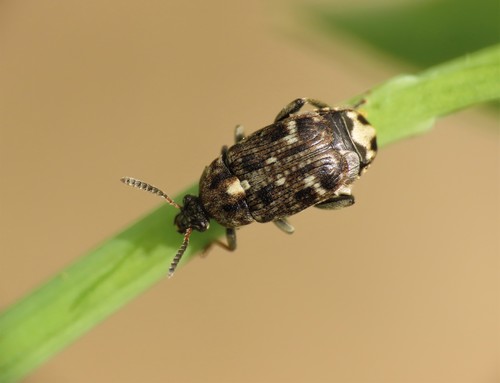MORE INFORMATION:
iNaturalist
Wikipedia
PNW Pest Management Handbook
Pea weevil (Bruchus pisorum)
Biology and life history: Adult pea weevils are small (1/5 inch) beetles with a stout, oval body that is mottled with gray, brown, yellow, black, and red. Adults overwinter in protected sites such as under bark. In spring they emerge and begin to feed on pollen of field pea (Pisum sativum) blossoms. Females lay a variable number of tiny, elongate yellowish eggs on young seed pods. Yellowish grublike larvae hatch after three to six weeks, enter the pod and begin feeding within a single seed. Mature larvae take around two months to develop and pupate within the seed. Adults cut through the seed coat to emerge and fly to overwintering sites. Often adults would not emerge until seeds are in storage. There is one generation per year.
Host plants and crop damage: This weevil feeds and develops on field pea exclusively. Adult females need to feed on pea pollen to reproduce. Feeding by the newly hatched larvae is not obvious on the surface of the pod, making it difficult to monitor infestations. The larva infests only one seed, but usually multiple larvae can be found in a pod. The larvae feed on seed content and eventually create a circular opening by chewing partially through the seed wall. Pupae develops inside and adults emerge by chewing through it. Damaged seeds can be separated from sound seed, but this reduces net marketable seed.
Management: Insecticides need to be applied before oviposition using registered materials. A clean harvest that reduces infested seed left in the field can reduce overwintering adult populations.

